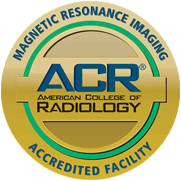DEXA Bone Densitometry
DEXA at ZP
A DEXA scan is the most accurate and most commonly used method for measuring bone loss. It is the best way for doctors to diagnose conditions like osteoporosis or osteopenia, as well as assess a patient’s risk of suffering a bone fracture.
DEXA bone density exams are primarily recommended if you have x-ray evidence of vertebral fracture, family history of osteporosis or hip fracture, or experienced a fracture after only mild trauma.
If you have hyperthyroidism, hyperparathyroidism, type 1 diabetes, use medications that are known to cause bone loss or are a post-menopausal woman not taking estrogen, a DXA scan should be performed.

What to Expect During the Test
During a DEXA scan patients lie on their backs and the machine passes over them. It is a non-invasive, painless procedure that measures your bone density. The machine uses very low dose x-rays with differing energy levels that get directed at the bones being scanned. The images produced allow the radiologist to determine your bone mineral density. Fewer x-rays pass through denser bone. This information tells doctors the average density of the bone. A low score indicates that the bone is more prone to fracture and some material of the bone has been lost.
Learn About the Different Types of DEXA Exams
Vertebral Fracture Assessment
Vertebral Fracture Assessment scans the bones of the spine to see if any vertebrae have an abnormal shape. A VFA can be done on the same visit as measuring your bone density. It is particularly useful if you are at high risk for vertebral fracture but do not know if you have one. If you have become shorter with age, have stooped posture, previous fracture of any type as an adult, or unexplained back pain, you may have a vertebral fracture.
Prior vertebral fractures are a better predictor of future fractures than low bone mineral density alone and patients with vertebral fractures have an increased risk for future fractures. Two thirds of patients with vertebral fractures do not present with complaints of back pain, making this test extremely informative.
FRAX® tool
The FRAX tool was developed by the World Health Organization to evaluate the fracture risks of patients with low bone mass. The FRAX® models have been developed from studying population-based cohorts from Europe, North America, Asia and Australia. FRAX® can help to identify people who have a greater chance of breaking a bone as well as people who might benefit from taking osteoporosis medicine. The tool looks at a person’s age, family history, bone density and other factors to estimate the patient’s chance of fracturing a hip or another major bone within the next ten years. It can be used to guide treatment decisions in postmenopausal women, men over the age of 50, and people with low bone density.
Why Choose Zwanger Pesiri?
Zwanger-Pesiri Radiology brings world-class expertise to the Long Island community. Our subspecialty-trained radiologists are Board Certified by the American Board of Radiology with fellowship training in a variety of specialties. They are highly-skilled, highly-knowledgeable, and make patient care a priority. To learn more, contact us today.
